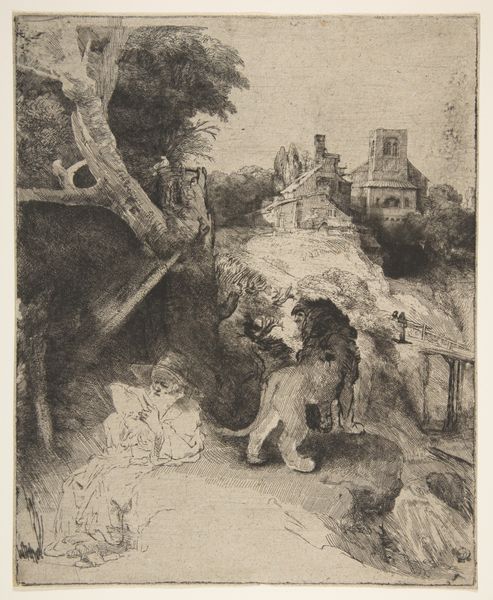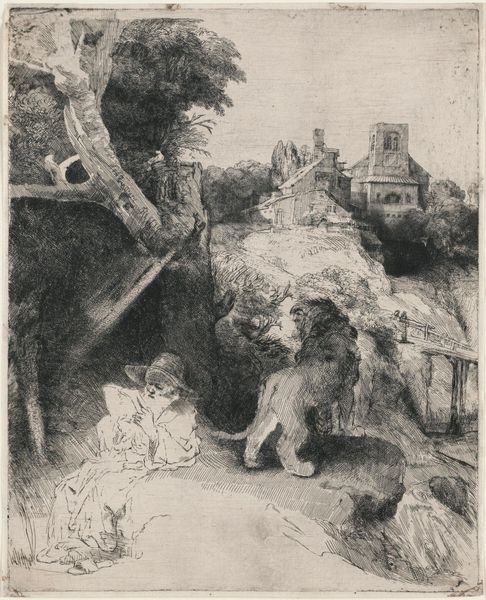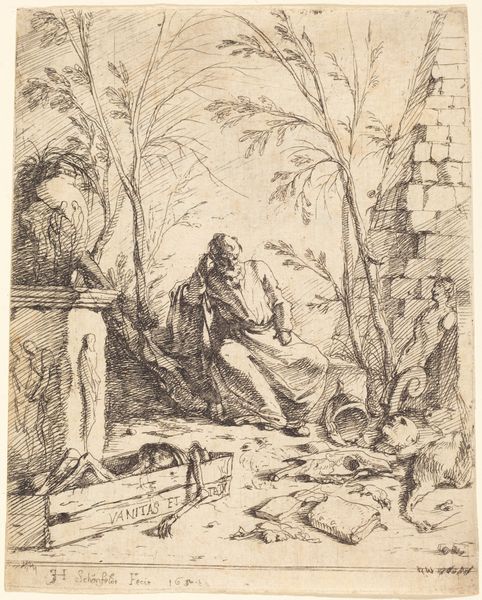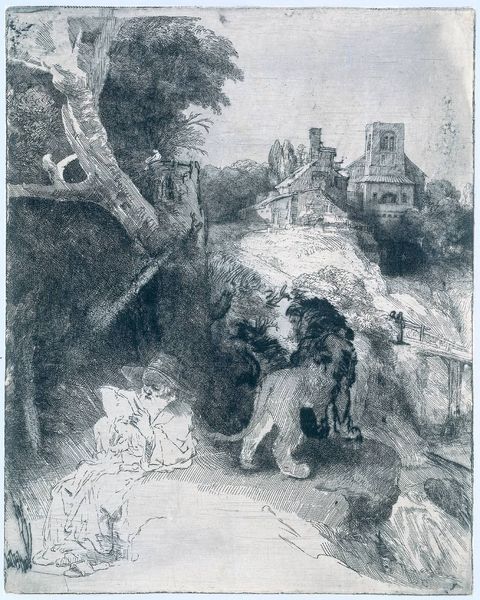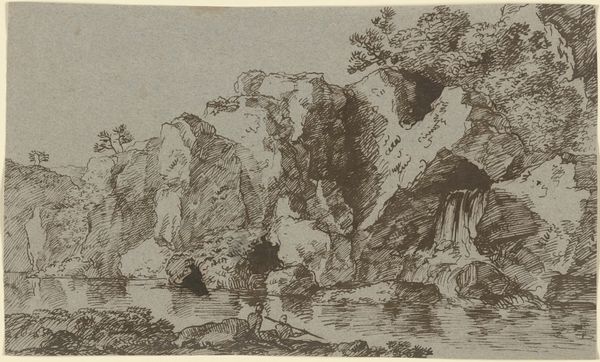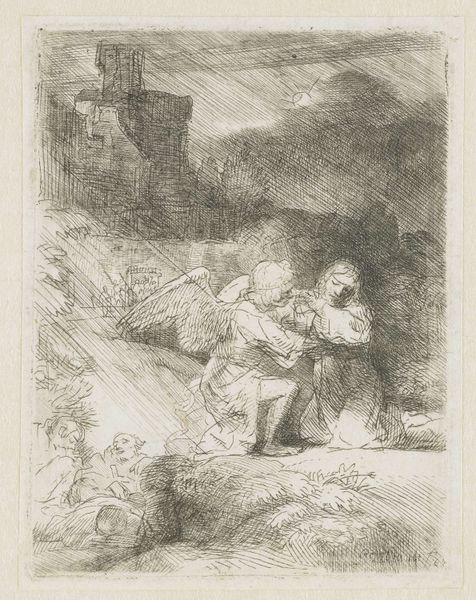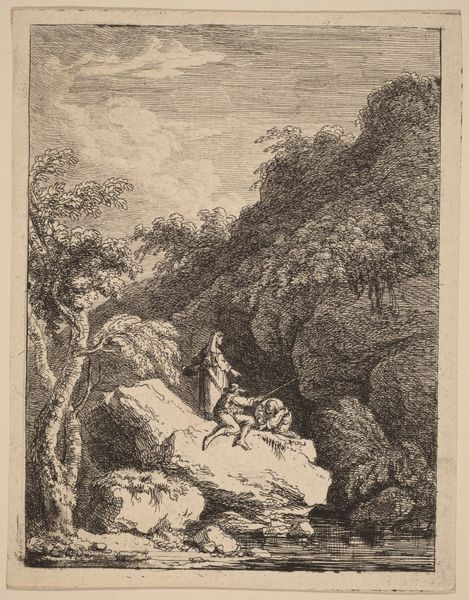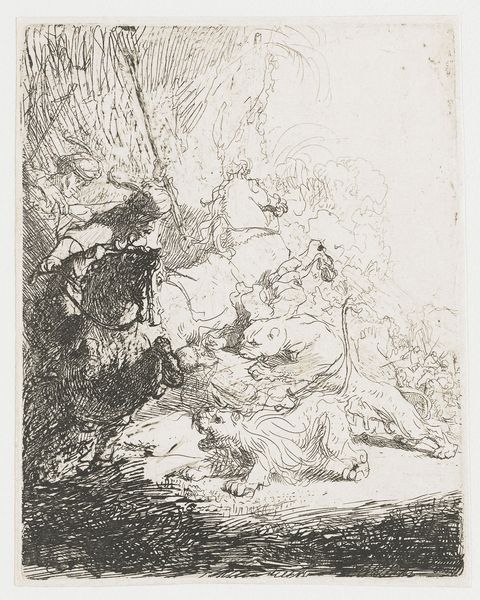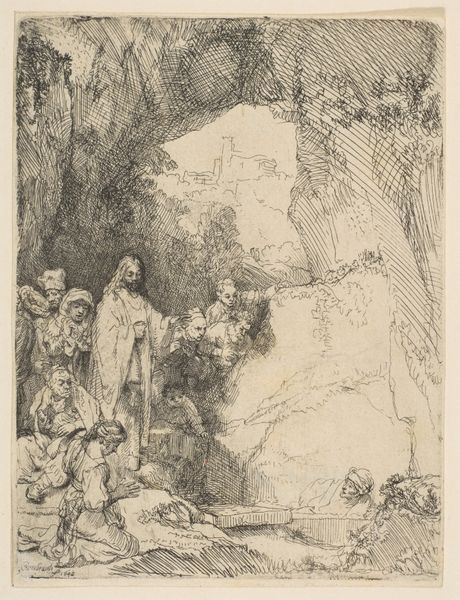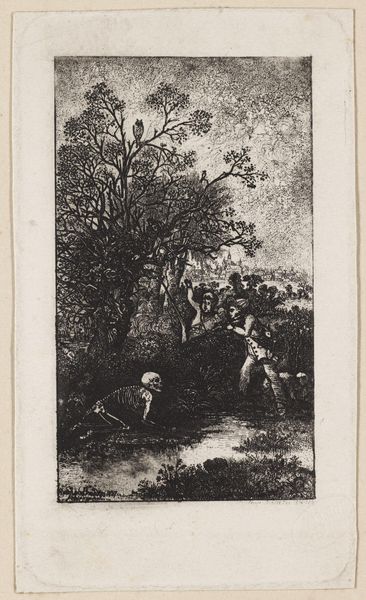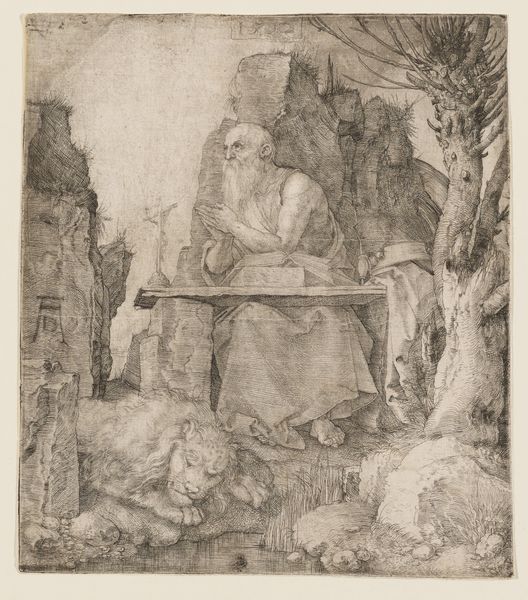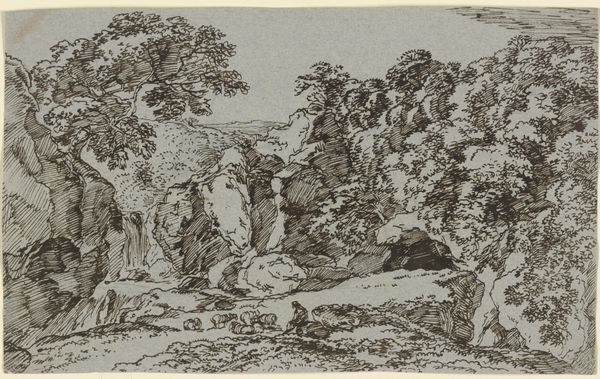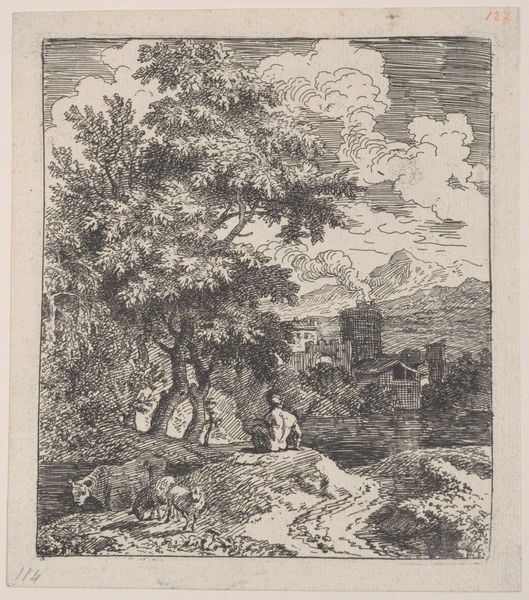
Saint Jerome Reading in an Italian Landscape c. 1654
0:00
0:00
print, etching, drypoint
#
baroque
#
dutch-golden-age
# print
#
etching
#
landscape
#
figuration
#
genre-painting
#
history-painting
#
drypoint
Dimensions: 10 1/4 x 8 1/4 in. (26.04 x 20.96 cm) (plate)
Copyright: Public Domain
Rembrandt van Rijn created this etching, Saint Jerome Reading in an Italian Landscape, during the Dutch Golden Age, a period marked by unprecedented economic prosperity and cultural flourishing in the Netherlands. Here, Rembrandt depicts Saint Jerome, a key figure in the Catholic Church known for translating the Bible into Latin. But instead of a traditional, austere depiction, Rembrandt sets Jerome within a common, pastoral scene, one reminiscent of the Italian countryside. The presence of the lion, a traditional symbol of Saint Jerome, softens what would otherwise be a typical landscape. Consider how Rembrandt, a Protestant artist working in a largely Protestant society, engages with a Catholic subject, creating a space where faith and everyday life intersect. Through his expressive etching technique, Rembrandt invites us to contemplate the relationship between the sacred and the secular, and the personal and the historical.
Comments
minneapolisinstituteofart about 2 years ago
⋮
Rembrandt never traveled far from the flat Dutch landscape, yet here he placed Jerome in a mountainous Italian setting. The artist lifted the elaborate architecture of the distant buildings from Venetian prints and drawings produced more than a hundred years earlier; yet the ambiguity of the overall space anticipates the work of Paul Cézanne two centuries later. The saint is immersed in a book as his trusted lion stands guard. Rembrandt's spare linework causes Jerome seemingly to dissolve in the noonday sun, a visual metaphor for the sacred realm.
Join the conversation
Join millions of artists and users on Artera today and experience the ultimate creative platform.
